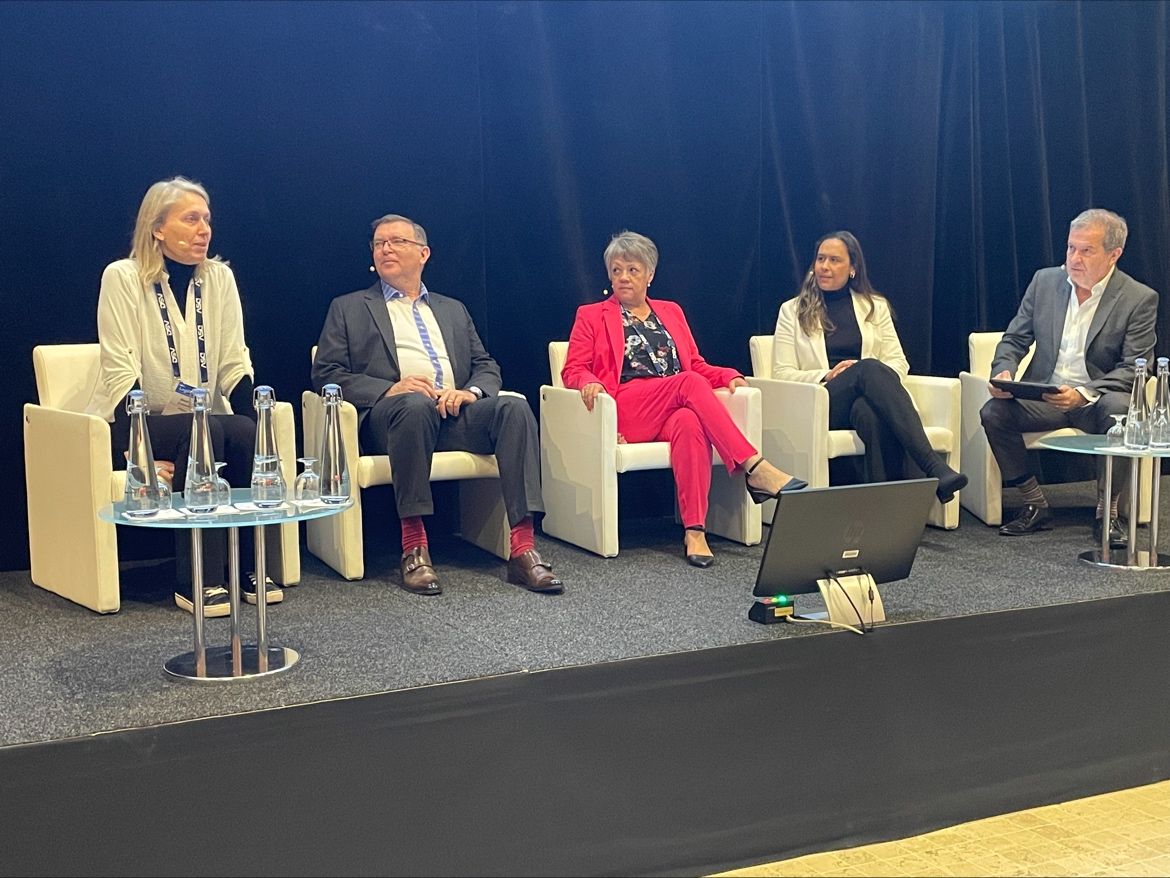LogiPharma Europe 2024: Properly Applying Diversity, Equity, and Inclusion Initiatives Within the Life Sciences Supply Chain
Panel discussion addresses how DE&I can successfully tackle systemic biases and more.

Many could make the argument that diversity, equity, and inclusion is a concept that often that does not take as much precedence in the workplace as it should. The same holds true for the life sciences sector, and in response, LogiPharma Europe hosted a panel discussion titled “How can Diversity, Equity, and Inclusion (DE&I) initiatives within the life sciences supply chain effectively address systemic biases, drive performance and effectively improve innovation, ethical standards, and global healthcare access?”
Moderated by David Kurk, conference moderator and ambassador on behalf of DK Productions, he was joined by Frank Binder, VP of global supply chain, Santen; Glynis Sylvester, VP of chain, EMEA for Edwards; Beatrice Colombo, site lead and DEI Europe-regional council co-chair, Pfizer; and Priscila Moreira, director head of intercompany delivery management, Bayer, to discuss a multitude of issues within the space, including but not limited to:
- Challenges they and their companies face with regards to DE&I
- The handling of diversity on teams
- Advice to drive DE&I
- How access to medicine factors into DE&I initiatives
To start off the session, 93% of attendees reported having formalized DE&I within their organizations, and 5% confirming that they do not know.
“Most of us work for multinational companies, and generally, these strategies are defined at the global level at the headquarters. It’s always on its pilot at the headquarters, and it will eventually get into the regional,” Sylvester explained. “That’s probably where the ‘don't knows’ come in, because it's probably sitting still very much at the corporate level. They’re trying to see how you take this diverse structure from the corporate level and make it a little bit more localized.”
There is also this idea of solely seeing DE&I as Kurk described a tick-box exercise, and Sylvester continued to note that there is still an element of that in the form of labor laws that dictate these requirements.
But in terms of challenges, gender bias is at the top of the list, and can vary from culture to culture.
“When we talk about gender bias, definitely that is present for us as a company that is the case, because this is a Japanese problem and a big part of our workforce; our leadership is based in Japan. So that is one of the more extreme challenges Japan has, compared with some other countries. So that's definitely something I recognize. But also, I think the mindset and ownership for awareness is necessary— if it's not owned by the leaders at every level of an organization, then you get into situations where the program is not as effective as it should be.”
This could potentially be due to unconscious bias. Interestingly enough, Moreira indicated that many of these points link back to the inclusion aspect.
“How do you ensure ways are achieving that, how do you include it afterwards, and how do you avoid this unconscious bias? These are questions we receive every day, that most likely a male leader will never receive. And so inclusion is super important, it’s much harder to measure that everybody feels included in the organization. I think many of those challenges that are mentioned here link back to inclusion.”
When it comes to hiring and strategic workforce capability planning, the handling of diversity on teams involves, being respectful of all cultures and embracing one’s differences.
“I lead a pretty diverse team, you know, Latin America, Europe, Africa, Middle East, but also coming from a South African background just within South Africa,” said Sylvester. “There are 14 languages spoken, so understanding that language and culture means ensuring that a team is looking at the cultural differences, but also ensuring that we take into consideration the language differences, because we all speak English, but English is not necessarily the first language of all of our team members.”
From an access to medication standpoint and how it plays in DE&I initiatives, according to Colombo, affordability ought to be top of mind.
“It's another way of being part of this diversity strategy, and using it to evolve and to continue to improve your system in order to make that affordable,” she noted. “This is honestly for me something that makes me very proud to work for a company that is not linked to strategy of DNI in terms of only the diversity aspect, not just the numbers or metrics, but really on what can be the impact, because it's the impact on what we can provide as a product, it’s the impact of how we can shape or alter the environment with our external partnership. So the piece on the access and affordability of the drugs of the medicine is a key part of the strategy.”
Reference
Sylvester G, Colombo B, Kurk D, Binder F. How can Diversity, Equity, and Inclusion (DE&I) initiatives within the life sciences supply chain effectively address systemic biases, drive performance and effectively improve innovation, ethical standards, and global healthcare access? April 18, 2024. LogiPharma Europe 2024. Lyon.